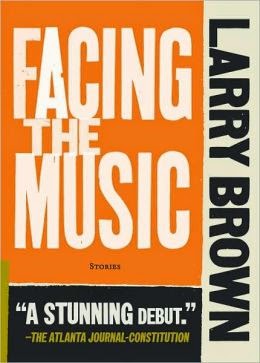Larry Brown/His South and Mine
 Should America become adult enough to read Southern literature, become wise enough to call out Southern mythology for the honeycomb of prevarication that it is, and become intelligent enough to take the blood pressure of the real thing in a Southern story —– should that improbability occur, America will value Larry Brown more than it currently does. It will value the exercise of dealing with his South, my South, and our South.
Should America become adult enough to read Southern literature, become wise enough to call out Southern mythology for the honeycomb of prevarication that it is, and become intelligent enough to take the blood pressure of the real thing in a Southern story —– should that improbability occur, America will value Larry Brown more than it currently does. It will value the exercise of dealing with his South, my South, and our South.
Larry Brown is a natural part of my Mississippi mindscape, that perplexing geography which has more talent per square inch than most of the United States has per square mile. Exaggeration has a purpose.
I discovered Larry Brown in the 1980s and became very impressed with his writing in the stories collected as Facing the Music (1988) and in his novel Dirty Work (1989). I had never seen his photograph before I telephoned him to announce that he’d won the Mississippi Institute of Arts and Letters 1989 award for fiction. I liked the modesty I heard in his voice as he thanked me for conveying the news and assured me he would attend the award ceremony in Jackson, Mississippi. When he appeared for the ceremony, washed and dressed as appropriately as a good ole Mississippi boy who does not qualify as gentry can be, I had a not unpleasant shock of recognition. Brown (July 9, 1951-November 24, 2004) looked like the incarnation of a Confederate soldier fresh out of a sepia daguerreotype. The man, the fireman, with whom I was speaking could accept fate for whatever it is. Here was an ordinary man who discovered he had an extraordinary talent for writing sturdy sentences and intriguing stories. What did it matter that he was not a person of color? He could write. He could tell me a great deal that I needed and wanted to know about a South that lived behind thick rhetorical veils.
His ability to write did not protect him from the bitchy criticism of one Mississippi Institute of Arts and Letters board member who objected to his receiving the award. She passionately complained that Brown is not one of us. “He does not represent us.” But that was typical. The same woman was upset when Robert Townsend Jones won the MIAL award for photography. This woman of no-color, famous for
broadcasting that Eudora Welty was one of her “closest” friends, was beneath the dignity of a response. I ignored her and praised Brown for his noteworthy grasp of what drives humanity. Perhaps I should have said to her “Of course, he is not like you. He is not a woman who just might have a grandmother in her bloodline who has to be hidden behind the kitchen stove.” Brown was not a pretentious barbaric Southern aristocrat. He was an uncensored truth-teller.
Larry Brown was a Mississippi male writer who was clearly influenced by William Faulkner, but he was better than Faulkner in writing about Southerners who were just plain, fractured, unprivileged people; his characters in the novels Big Bad Love (1990), Joe (1991), Father and Son (1996), Fay (2000), The Rabbit Factory ( 2003 ), the unfinished Miracle of Catfish (2007) did not represent the full range of Southern humanity. Nor, as far as I know, did Brown ever claim he was trying to write about the whole God-damned and fantasy-enthralled violent and occasionally non-violent South. They represented with uncanny accuracy in speech and behavior the people Brown knew most intimately. It is a mistake to say he wrote grit lit. in the tradition of Erskine Caldwell or Southern gothic literature in the tradition of Flannery O’Connor. He wrote literature as Willie Morris, Richard Wright, Ellen Douglas, and Barry Hannah did, as Charlie R. Braxton, Alice Walker, Richard Ford, Minrose Gwin, C. Liegh McInnis, Frank X. Walker and John Grisham still write fiction and poetry. He followed his moral compass. His two non-fiction books On Fire (1995) and Billy Ray’s Farm (2001) tell us much about his forte: the plain sentence.
Larry Brown was a Southern writer who wrote for Americans who do not volunteer to be blind, who choose not to be suspended in the innocence of their infancy. When we truly grow up, we may be able to use Brown’s legacy as part of the equipment we need for living.